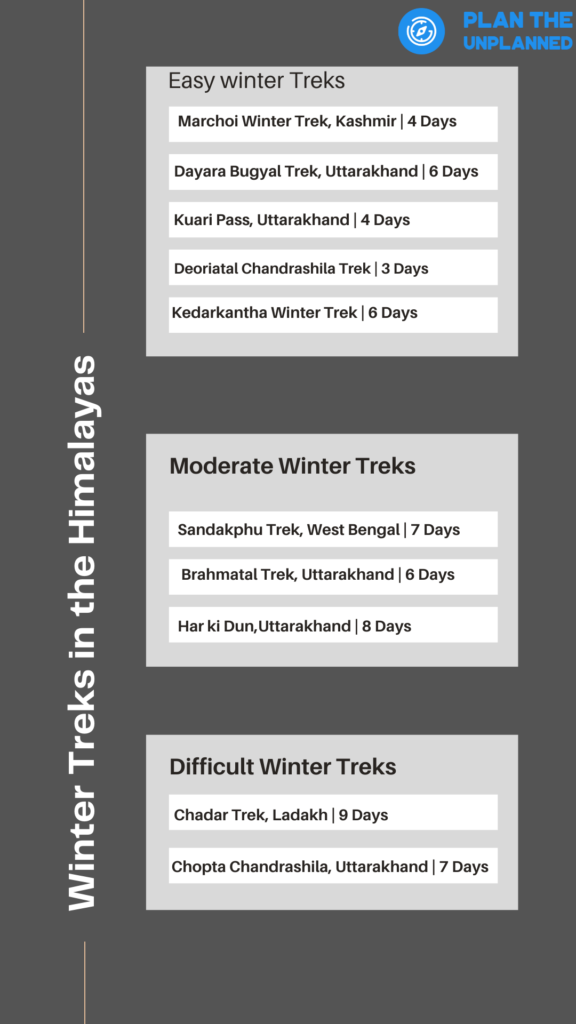Trekking in winter is a notch up than in other seasons because of snowfall and low temperatures. And if you don’t want the winter blues to hit you, two things will make your winter trek successful: ample fitness and suitable clothing. If you are looking forward to a snow trek in winter, opt for December, January and February. But be sure you are prepared to enjoy the benefits of winter trek with blooms happening at lower reaches, carpets of whites laying till infinity on the high ends and snowflakes caressing you from time to time. This is a comprehensive guide for layers for a Himalayan Winter Trek.

Questions that we are going to answer today.

Uncertainty is the fun factor in winters. You can not say anything about the weather in winter in the Himalayas, which means we have to play by nature’s rules.
Trekking in winter is manageable, but you can expect moderate difficulty due to temperature variations. On average, the temperature will fluctuate between -15 °C to 8 °C. This means you will be wearing just two-three layers during the day. You must protect yourself from the biting snow and cold at night. However, it will not be too cold when it snows or rains; the temperature will drop later. So, it is imperative to wrap your body in layers to avoid sickness.
You should keep at least five layers for any situation.




Let us know in the comments if you have any other doubts about layers for a Himalayan Winter trek; we will be back with an answer as soon as possible.

I enjoyed reading your blog post.
May I just say what a comfort to discover somebody that really understands what they are talking about on the web. You definitely know how to bring an issue to light and make it important. More people have to read this and understand this side of the story. I cant believe you arent more popular since you certainly possess the gift.